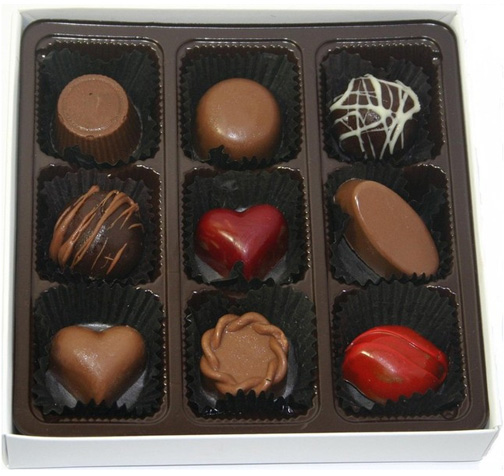Puerto Rican impresarios dipping into chocolate-making


Antique Chocolates sells an assortment of pieces that pair dark, white and milk chocolate with fillings of strawberry balsamic, guava, orange, hazelnut, coconut, peanut butter and honey lime, among others.
By Nicole Ortiz
Special to News is my Business
Making and selling artisan chocolates in Puerto Rico has become a competitive option for local small businesses, which are already dipping into a growing economic sector.
Two local companies making a reasonable run in chocolate-making are Bajari Handcrafted Chocolates, owned by Paul Curran, and Antiques Chocolates, with Maria Beatriz Damas as its leader. Both agreed that their main reason for entering this field was the opportunity they saw to succeed.
“There was no company to run artisan chocolate shops in Puerto Rico,” said Damas, who began commercially selling chocolate in May 2012. Meanwhile, Curran started experimenting with chocolates in 2007, but didn’t start selling until 2010.
Pedro Silva-Velázquez, economist and treasurer of the Puerto Rico Economists Association, said there is a market need for these types of locally made chocolates, noting the main reasons for their commercial boom have to do with the fact that “people are trying to be healthier and also because of the quality of the product.”
Both companies claim to use the finest products for their hand-dipped and folded confections, which combine classic and novel flavors. Antique Chocolates, for example, sells an assortment of pieces that pair dark, white and milk chocolate with fillings of strawberry balsamic, guava, orange, hazelnut, coconut, peanut butter and honey lime, among others.
To craft their products, both entrepreneurs said to be committed to supporting the local industry and buying their fillings and materials on the island. Curran purchases most of his cocoa in Puerto Rico, and employs young adults, because according to him, this way he can “try to mold them and plant that first experience where they see that work is important.”
While Damas doesn’t source her chocolate locally, she is committed to hiring local chefs and graduates from Puerto Rico culinary schools to enhance their knowledge in the chocolate-making business.
She explained that she buys the product from Venezuela because of the cost of cocoa beans in Puerto Rico. However, cocoa bean prices are increasing everywhere, according to a story by The Wall Street Journal saying that, “prices are on the rise due to a shortage of cocoa beans” and experts believe “that supplies will fall short of demand this year for the first time since 2010.”
Bajari Handcrafted Chocolates is established in the west and sells in various stores throughout the metropolitan area, while Antiques is established in the metro area — so they have different marketing targets. Damas said her aim is directed more toward tourists, while Curran said he’s pursuing all who enjoy good chocolate.

Bajari Handcrafted Chocolates is established in the west and sells in various stores throughout the metropolitan area.
Expanding their reach
When it comes expanding its reach, Damas said to have targeted several hotels in various locations on the island, but distribution is tricky for her product because chocolate is a delicate good to transport.
On the other hand, Curran said that even though Bajari’s product can be found in Arecibo, Isabela, and Aguadilla — packaging was a main stumbling block for not “being fully in the market” yet.
For chocolate makers, high seasons are usually Christmas, Valentine’s Day, and Mother’s Day, when boxes of the cocoa-based treats are usually high on the list of gifts.
Damas said although she expected more, her company has had a 60 percent year-over-year growth. Curran, meanwhile, said he has also sold more, although he didn’t have the exact growth figure on hand.
According to the International Cocoa Organization, 763.5 thousand tons of chocolate were consumed in the United States between 2011 and 2012.






